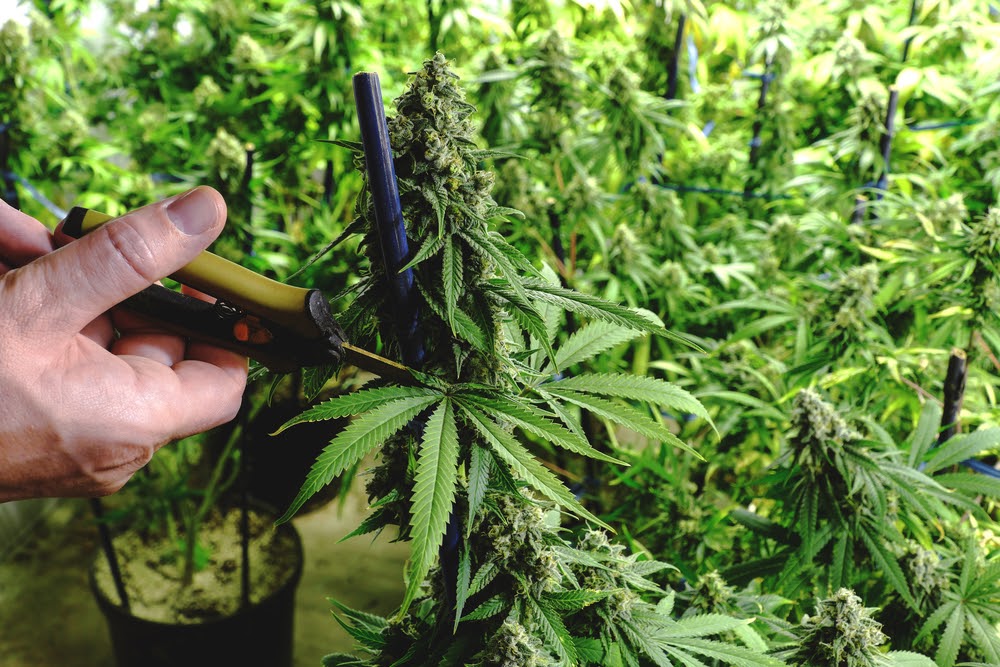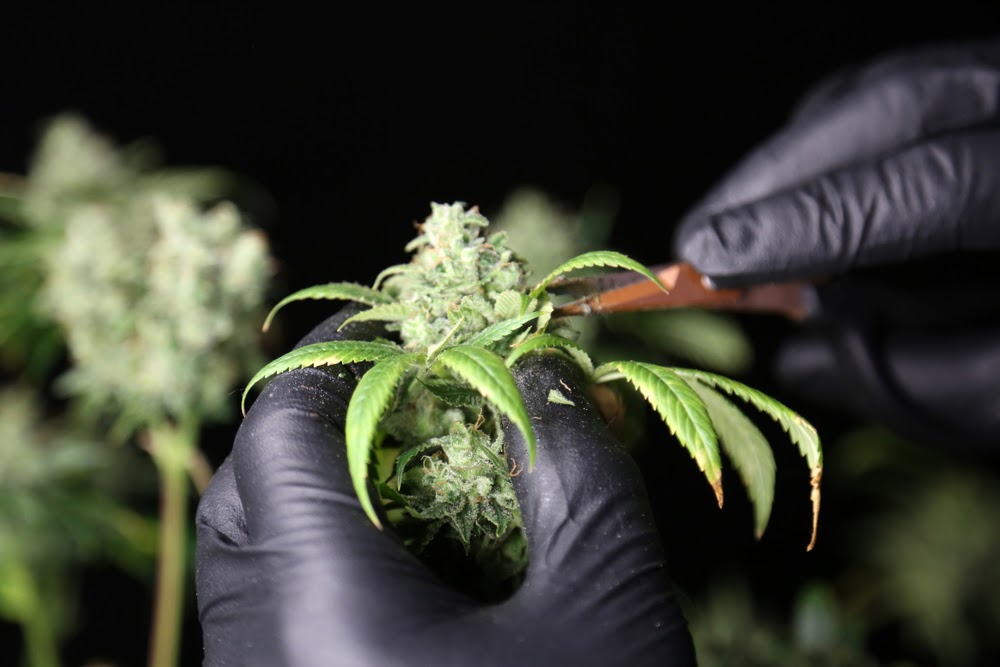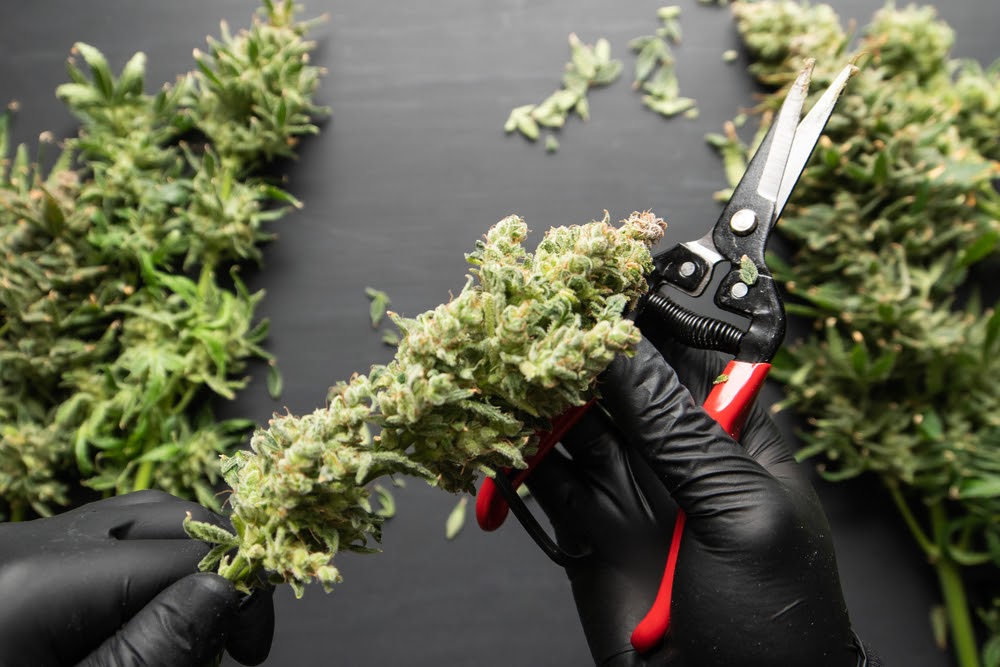Cannabis
Trimming Weed – How to Manicure Your Buds
Despite the accessibility of machine trimmers out there on the market today, many cannabis growers still favor trimming marijuana by hand — wielding scissors, pruners, or shears for hours on end. While trimming weed may sound simple and straightforward, there are several factors to consider if you’re wanting to give your weed a first-class trim job. Knowledge of your particular strain, the plant’s unique needs, and your preferences are all considerations you should make long before reaching the weed trimming stage.
Harvesting your bud at the perfect time requires knowledge of the strain you’re working with, and basic weed growing expertise including monitoring light, temperature, and humidity levels. This is not for the faint-hearted and can be time-consuming and laborious — but it needs to be done to ensure your plants produce the highest cannabinoid content possible.
Once the harvest is completed, you can then move on to the trimming stage. Like harvesting, trimming weed needs to be done correctly to keep excess plant material and mold from hanging around.
In this growers guide, we’ll help you hone your weed trimming skills and break down when, why, and how to properly trim your buds.
 There are 4 good reasons why trimming weed properly is crucial for producing optimum results. These include:
There are 4 good reasons why trimming weed properly is crucial for producing optimum results. These include:
 Before moving further, you need to have certain plant anatomy lingo at your disposal.
Trimming weed requires that you first have a room or designated space set up, that your tools are ready to go, and you have a firm grasp of trimming knowledge and best practices. Let’s go over some useful tips you’ll need to know before getting started on your weed trimming journey.
Before moving further, you need to have certain plant anatomy lingo at your disposal.
Trimming weed requires that you first have a room or designated space set up, that your tools are ready to go, and you have a firm grasp of trimming knowledge and best practices. Let’s go over some useful tips you’ll need to know before getting started on your weed trimming journey.
Trimming Weed Lingo
Before we get into the logistics of trimming weed, you’ll need to have a firm understanding of the common lingo used among professionals in the cannabis industry. We’ll start this vocabulary lesson off with the term “fan leaves”. These are the largest leaves that supply energy to the plant via photosynthesis — but they’re not for getting high because they don’t form any cannabinoids or THC on them. Alternatively, “sugar leaves” are the leaves that form on the cola or top part of the marijuana plant that houses the core and buds of the plant. While sugar leaves do contain cannabinoids, they are produced in small amounts and are primarily used in concentrates and edibles because they contain chlorophyll — which makes for a foul-tasting smoke session. Now that you have some basic terminology under your belt, let’s dive deeper into the reasons why it’s important to use caution while trimming weed.Why Trimming Weed Is Important
 There are 4 good reasons why trimming weed properly is crucial for producing optimum results. These include:
There are 4 good reasons why trimming weed properly is crucial for producing optimum results. These include:
- Potency: The act of trimming weed prevents consumers from ingesting or inhaling plant material that serves no psychoactive or medicinal purposes.
- Experience: Expanding on the reason listed above — consuming plant material that offers no medicinal or psychoactivity is pointless and excessive. Piggybacking from the Lingo section of this guide, we know fan leaves are medicinally and psychedelically useless, and sugar leaves contain chlorophyll, which leaves a bad taste in your mouth.
- Appearance: Imagine going to a dispensary and not being able to see your bud because it is laden among a forest of leaves. That wouldn’t look too appealing, plus it would be hard to determine the actual quality of the bud living behind that curtain of greenery.
- Vitality: Trimming weed correctly also helps aid the curing process by increasing airflow and reducing moisture collection. Likewise, marijuana that isn’t trimmed could become overgrown with mold and just generally be lacking in quality compared to trimmed weed.
Wet vs Dry Trimming and Hand vs Machine
Before we dive into the specifics about trimming weed, you’ll first need to learn about the 4 different ways to do it:- Wet Trimming: This method requires you to trim all fan and sugar leaves 1-2 days before harvesting. This is particularly important for preventing mold when your humidity levels are at 60% or more. If your weed trimming end-goal is focused on the fastest and easiest method — go with a wet trim.
- Dry Trimming: This approach to trimming weed only requires you to remove the fan leaves before harvesting, and trimming the sugar leaves after the buds are dried. Dry trimming weed is ideal for those looking for a gradual drying process that produces dense buds, so if you like things slow and steady — give dry trim a shot.
- Hand or Machine Trim? : If you’re high on the hog, you can always invest in a weed trimming machine to help ease the common challenges that are associated with trimming weed including long hours and physical et-backs like sore hands, tired feet, and back pain. While sizes and prices vary, you can always go old school and do it by hand to save yourself some money.
How to Trim Weed – Step-by-Step
 Before moving further, you need to have certain plant anatomy lingo at your disposal.
Trimming weed requires that you first have a room or designated space set up, that your tools are ready to go, and you have a firm grasp of trimming knowledge and best practices. Let’s go over some useful tips you’ll need to know before getting started on your weed trimming journey.
Before moving further, you need to have certain plant anatomy lingo at your disposal.
Trimming weed requires that you first have a room or designated space set up, that your tools are ready to go, and you have a firm grasp of trimming knowledge and best practices. Let’s go over some useful tips you’ll need to know before getting started on your weed trimming journey.
Trimming Room Tips
Humidity, temperature, and being well-ventilated are all factors that need to be controlled and provided in a proper trim room. Ideally, the temperature should always be kept between 68℉ and 70℉, and humidity levels between 45-50%. If you’re concerned about odor, a HEPA or carbon filter can help, and hood fans can be utilized to improve ventilation. Another good tip is being comfortable. We recommend putting on some music, movies, or podcast; pulling up a comfortable chair, and taking frequent breaks to ease the strain and monotony that comes with trimming weed by hand.Trimming Tools
Below is a list of must-haves you’ll need for a successful trim job:- Cannabis specialty trimming scissors: For cutting stems and branches, you can use your run-of-the-mill scissors, but for the leaves, you’ll want to opt for sharp and sterilized scissors that were made for manicuring. If you’re looking for a good pair but don’t know where to start, we suggest getting a pair of spring-loaded scissors.
- Use a stainless steel or Pyrex glass surface to trim: This is purely for clean-up and to save you time and frustration. Resin and trichomes don’t stick to stainless steel and glass the way it does other surfaces, so unless you’re a glutton for punishment — use glass and stainless steel.
- If using a chair set the correct height for your posture: This will help ease back, wrist, and shoulder pain. We also recommend standing up periodically to stretch your legs and lower back.
- Have the right gear: This translates to an apron and gloves. A silk apron would be best because resin can’t stick to it.
- Collect your leaves: Using a silkscreen draped over tarp or bucket to collect the fallen resin particles that can be used in edibles and concentrates.
- Cleaning supplies: Having a cup of rubbing alcohol and a rag will be useful for cleaning the sticky resin off your hands and scissors when you’re finished trimming weed.

